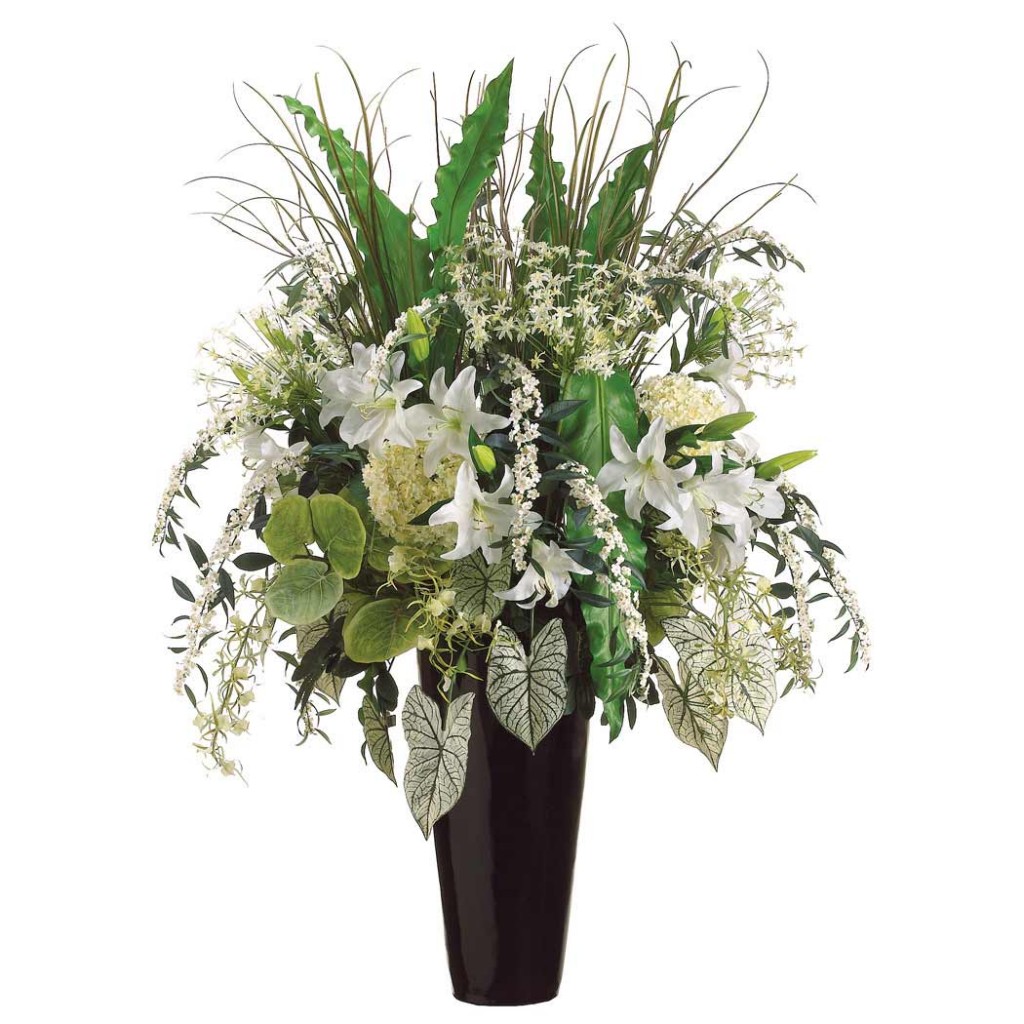Today, artificial plants and flowers are used for both their beauty and the benefit of their low-maintenance upkeep. In fact, the manufacturing of artificial flowers has become so advanced that the real thing can be difficult to differentiate from their faux counterparts. The current day realistic versions of artificial plants and flowers are just the latest installment in an artistic practice that is hundreds of years old.
Early Artificial Flowers
Although it is impossible to pinpoint the very first artificial plant or flower, it is easy to determine that the art of making artificial foliage is at least a few hundred years old. Ancient Chinese, Romans, and Egyptians all manufactured artificial flowers. The Chinese opted for silk and race paper while the Romans adapted a method of making extremely intricate and realistic-looking flowers out of wax. Egyptians used an entirely different material to craft their artificial wreaths — painted horn.
In the beginning, displaying artificial flowers was a sure sign of wealth. These handcrafted artistic flowers were painstakingly crafted out of an assortment of materials, including glass, painted linen, gold, sliver, silk, ribbons attached to wire, feathers, plastic, and more.
Producers of Artificial Flowers and Plants
It is widely believed that China was the first to make these artificial beauties but many other countries followed suit, including England, France, America and Japan. This list would be incomplete without the three reigning three largest producers of artificial plants: Thailand, Honduras, and the still champion China. China alone has built hundreds of artificial plant factories since 1980.
The Industry Today
Artificial plants and flowers has become a multi-billion dollar industry that is supported by millions of homes and commercial buildings in the U.S. and around the world. New technologies such as Permasilk and Permastem are continuing to advance the quality of these products, with some that feel and even smell just like the real thing. It is their realism that has fueled the current trend of using artificials in wedding bouquets, dresses, and veils, and to create elaborate toppers for wedding cakes.
Benefits
Artificial plants and trees are so popular because they require no sunlight, water, pruning, or soil. They are also allow you to enjoy out of season blooms and to combine two of your favorite flowers that would not naturally be blooming at the same time of year. As our lives continue to get busier and busier, these realistic looking plants allow you to enjoy all your favorite trees and flowers without working in the time to carefully tend to them. Personally, I choose them because I have horrible allergies to grasses and pollens and with silk versions, I can bring the outdoors in without the hassle of swollen eyes and a bright red nose. Once you invest in your first beautiful artificial arrangement, you will be able to experience all of these benefits for yourself, and understand why this industry is here to stay.
About Philip Travers
Twitter •



 WishLists
WishLists
 My Account
My Account






